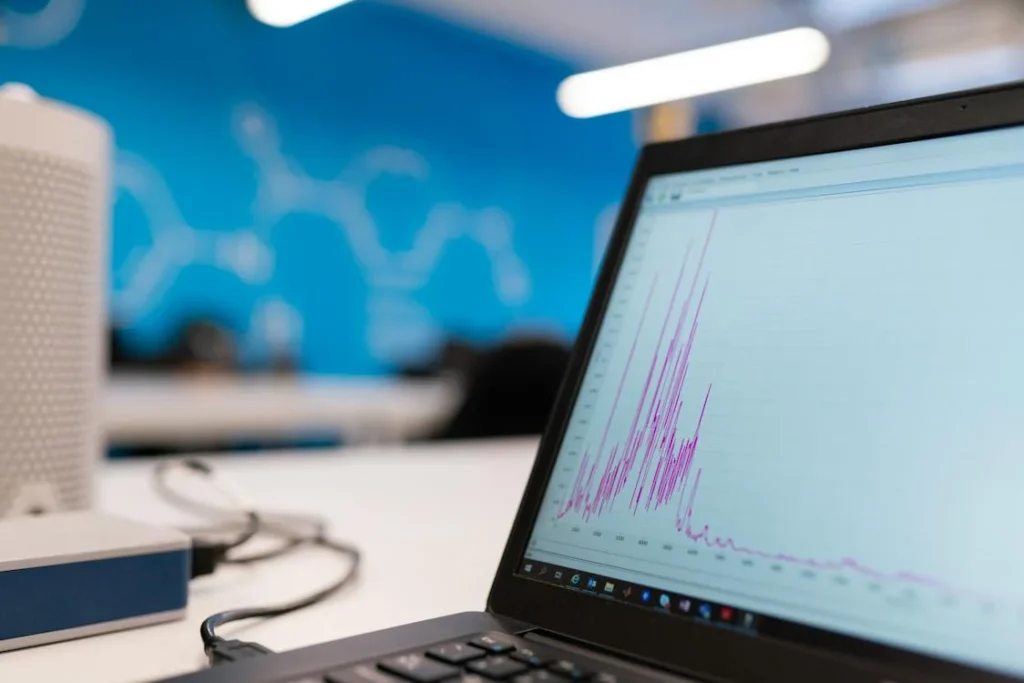In the vast, ever-evolving realm of digital marketing, where the landscape shifts faster than the sands of the Sahara, two giants stand tall, casting long shadows over the field of analytics: Clicky and Optimizely. These platforms promise to transform data into insights, insights into action, and action into measurable success. But as you stand at the crossroads, you might wonder, which path leads to the promised land of optimized conversion rates and user engagement? Is it the road paved by Clicky, with its real-time analytics and straightforward interface? Or does the path carved out by Optimizely, with its robust A/B testing capabilities and focus on experimentation, lead to the peak of digital nirvana?
Clicky | Optimizely |
|---|---|
| G2 Score – 4.5 out of 5 stars | G2 Score – 4.5 out of 5 stars |
| TrustRadius Score – 5/10 | TrustRadius Score – 8.7/10 |
Ease of Use: Setting Up Camp
Let’s pitch our first tent at the base camp of usability. In the quest for the best analytics tool, how easily you can set up and start using your chosen software is paramount. After all, in the world of digital marketing, time is not just money; it’s opportunities, insights, and ultimately, success.
Clicky: The Uncomplicated Trail
Clicky prides itself on being intuitive. From the moment you sign up, you’re greeted with a straightforward setup process. A few clicks here, a small snippet of code added to your website there, and voilà – you’re tracking real-time data. This ease of setup is a beacon for small to medium-sized businesses or individual bloggers who might not have a dedicated IT team to navigate the complexities of software integration.
What truly sets Clicky apart is its real-time analytics dashboard. It’s as if you’re standing at the lookout point, watching as every visitor explores your digital terrain. You can see who’s online, what they’re doing, and how they’re interacting with your content – all in real-time. This immediate feedback loop allows for quick adjustments, ensuring your website is as engaging and efficient as possible.
Optimizely: The Road Less Traveled, But Worth It
Optimizely, on the other hand, might seem like the path through denser foliage at first glance. It’s known for its A/B testing capabilities, which require a bit more setup time. You need to define your experiments, set up variations of your web pages, and then integrate Optimizely’s code into your site. It might seem daunting, but for those willing to invest this initial effort, the rewards can be substantial.
The power of Optimizely lies in its experimentation. It’s not just about tracking what’s happening on your site; it’s about actively finding out what changes can lead to better performance. Want to know if a red CTA button brings more conversions than a green one? Optimizely can help you find out. This approach requires a more hands-on investment, but it turns your website into a dynamic laboratory, constantly evolving and improving.
User Interface and Ease of Use
When it comes to choosing an analytics tool, the ease of use and the user interface (UI) play a crucial role in your decision. Why? Because no matter how powerful a tool is, if it’s a nightmare to navigate, you’re less likely to use it effectively.
Clicky: The Straightforward Champion
Clicky prides itself on offering a straightforward, intuitive interface. Right from the get-go, you’ll notice its dashboard is clean and uncluttered, making it a breeze to find what you need. The main menu is clearly labeled, and each section is designed with simplicity in mind. This simplicity doesn’t mean it skimps on features, though. Clicky provides real-time data, heatmaps, and a detailed breakdown of your visitors’ actions.
What sets Clicky apart is its direct approach to presenting data. You won’t be drowning in jargon or unnecessary complexities. It’s all about giving you the insights you need without the fluff. This makes Clicky an excellent choice for small to medium-sized businesses or individuals who need quick, understandable insights without a steep learning curve.
Optimizely: The Experimentation Pro
Optimizely, on the other hand, takes a slightly different approach. It’s renowned for its experimentation and A/B testing capabilities, which are part of its broader suite of digital experience optimization tools. The UI is sleek and modern, with a strong emphasis on visual data representation. For those who love digging into the data and running detailed experiments, Optimizely is like a playground.
However, with great power comes a slightly steeper learning curve. Optimizely’s dashboard and menus are well-organized, but the sheer number of features and options can be overwhelming for newcomers. It’s a platform that caters more to medium and large businesses that have specific optimization teams dedicated to maximizing website performance.
The key difference in UI and ease of use between Clicky and Optimizely lies in their target audience and core objectives. Clicky is about making life easier for website owners who want straightforward analytics without the need for deep technical knowledge. Optimizely, with its focus on experimentation, appeals to users who are willing to invest more time and resources into understanding their visitors’ behavior and testing different strategies for improvement.
For a small business owner or a blogger, Clicky’s no-nonsense approach might be the way to go. Its ease of use means you can quickly set it up and start getting valuable insights that can help you grow your traffic and engagement. On the flip side, if you’re part of a larger organization with the resources to delve into detailed experimentation and you want to fine-tune every aspect of your user’s experience, Optimizely’s depth and breadth of features will serve you well.

Related: Check out our free SEO suite

Depth of Analytics and Reporting
When choosing between Clicky and Optimizely, understanding how each platform handles data and what kind of insights you can expect is vital. Both tools offer a range of analytics and reporting features, but they cater to slightly different needs and preferences.
Clicky: Real-Time Insights at Your Fingertips
Clicky is a powerhouse when it comes to real-time analytics. It allows you to see what’s happening on your site as it happens. This instant feedback can be incredibly valuable for monitoring the immediate effects of changes to your site, tracking the performance of a new marketing campaign, or even detecting and mitigating issues as they arise.
One of Clicky’s standout features is its heatmap tool. Heatmaps are fantastic for visualizing where users are clicking on your pages, helping you understand what catches their attention and what doesn’t. This visual data is straightforward to interpret, making it easy for you to make informed decisions about how to improve your site layout and content placement.
Moreover, Clicky’s reporting capabilities are designed to be accessible. You can easily dive into specifics like individual visitor tracking, time on site, bounce rates, and much more. The platform also offers detailed segmentation, allowing you to drill down into your data based on various criteria, such as location, device type, or traffic source.
Optimizely: Experimentation-Driven Insights
Optimizely shines in its ability to provide insights through experimentation. It’s not just about tracking who visits your site and what they do; it’s about actively testing different versions of your site to see what works best. This experimentation-first approach is baked into every aspect of Optimizely’s analytics and reporting.
A/B testing is at the heart of Optimizely’s offering. You can create and test variations of your pages to see which one performs better in terms of conversions, engagement, or any other metric that matters to you. Optimizely takes it a step further with multivariate testing, allowing you to test multiple variables simultaneously to understand how different elements interact with each other.
The platform’s analytics are geared towards making these experiments as insightful as possible. You’ll find detailed reports on the performance of each test, including statistical significance, conversion rates, and other key metrics. This data is crucial for making data-driven decisions about content, design, and functionality changes on your site.
Integration and Third-Party Support
The ability of your analytics tool to seamlessly integrate with other platforms and services you use can significantly enhance its value. Whether it’s your CRM, email marketing software, or e-commerce platform, integration can streamline your workflow and provide deeper insights by connecting data across different tools.
Clicky: Simplified Integration for Essential Tools
Clicky might not boast the vast integration ecosystem that some of its competitors do, but it covers the essentials well. Its straightforward approach extends to how it handles integrations, focusing on making the process as simple as possible. Clicky integrates directly with popular platforms such as WordPress, offering plugins that make installation and data tracking effortless. For e-commerce sites, Clicky provides integration options that allow you to track sales and conversions directly from your dashboard.
One of Clicky’s strengths is its API, which developers can use to create custom integrations. This means that while Clicky might not offer an off-the-shelf integration for every tool out there, there’s potential to build it if you have the resources. This flexibility is a plus for teams that need a custom setup and are willing to invest in developing it.
Optimizely: A Robust Ecosystem for Advanced Users
Optimizely shines in its ability to integrate with a wide array of third-party applications and services. Its focus on experimentation and optimization means it plays well with tools across marketing, sales, and data management domains. Optimizely’s integrations extend to major CRM systems, advertising platforms, content management systems, and more, allowing for a seamless flow of data across your tech stack.
What sets Optimizely apart is not just the number of integrations but also the depth of these connections. For example, integrating Optimizely with your CRM can enable you to personalize website experiences based on user data stored in your CRM, creating highly targeted content that can improve conversion rates.
Additionally, Optimizely’s robust APIs and SDKs support custom integrations, enabling businesses to tailor the platform to their specific needs. This level of customization and integration capability is particularly valuable for large enterprises or any business with a complex digital ecosystem.
Pricing
Clicky:

Optimizely:

Conclusion
In concluding our deep dive into Clicky versus Optimizely, it’s clear that both analytics tools have their unique strengths, catering to different needs and preferences. Your final choice will hinge on what matters most to you and your business: simplicity and real-time analytics or depth of experimentation and integration.
Clicky emerges as the champion of straightforward, real-time website analytics. It’s designed for users who value ease of use and immediate insights. With a user-friendly interface, Clicky makes it easy for small to medium-sized businesses, bloggers, and marketers to understand their website traffic and improve their online presence without getting overwhelmed by data.
Optimizely, on the other hand, is the go-to platform for businesses focused on maximizing website performance through detailed experimentation and personalization. It offers a robust suite of features for A/B testing, multivariate testing, and personalization, backed by deep integration capabilities. Optimizely is best suited for medium to large businesses or those with specialized teams dedicated to optimizing the digital experience.
Read Next:
- ConvertKit vs Moosend: The Best Email Marketing Tool for 2024
- ActiveCampaign vs EmailOctopus: The Best Email Marketing Tool for 2024
- AWeber vs EmailOctopus: The Best Email Marketing Tool
- ConvertKit vs Mailjet: The Best Email Marketing Tool for 2024
- ActiveCampaign vs Campaigner: The Best Email Marketing Tool for 2024





















